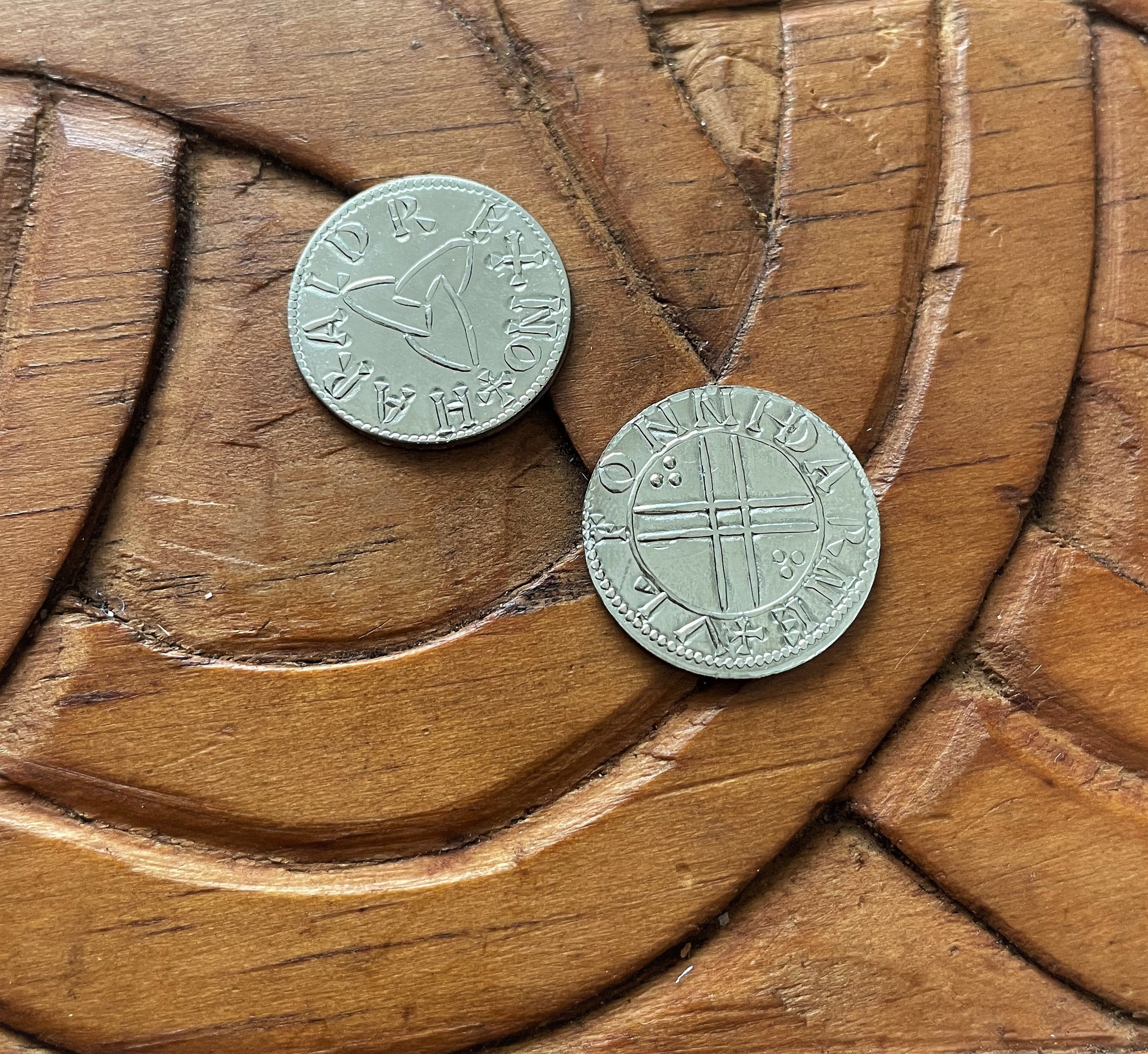Haraldr Sigurðarson "Hardrada " King of Norway Silver Penny(Pair)
1015-1066
Harald of Norway, given the epithet Hardrada, roughly translated as "stern counsel" or "hard ruler" in the sagas, was King of Norway (as Harald III) from 1046 to 1066. Additionally, he unsuccessfully claimed both the Danish throne until 1064 and the English throne in 1066. Before becoming king, Harald had spent around fifteen years in exile as a mercenary and military commander in Kievan Rus' and of the Varangian Guard in the Byzantine Empire.
When he was fifteen years old, in 1030, Harald fought in the Battle of Stiklestad against the forces od Cnut and after losing was forced into exile to Kievan Rus' (the sagas' Garðaríki). He thereafter spent some time in the army of Grand Prince Yaroslav the Wise, eventually obtaining rank as a captain, until he moved on to Constantinople with his companions around 1034. In Constantinople, he soon rose to become the commander of the Byzantine Varangian Guard, and saw action on the Mediterranean Sea, in Asia Minor, Sicily, possibly in the Holy Land, Bulgaria and in Constantinople itself. Harald amassed considerable wealth during his time in the Byzantine Empire, which he shipped to Yaroslav in Kievan Rus' for safekeeping where he returned in 1042.
In 1046, Harald joined forces with Magnus's rival in Denmark (Magnus had also become king of Denmark), the pretender Sweyn II of Denmark, and started raiding the Danish coast. Magnus, unwilling to fight his uncle, agreed to share the kingship with Harald, since Harald in turn would share his wealth with him. The co-rule ended abruptly the next year as Magnus died, and Harald thus became the sole ruler of Norway. Harald's reign was probably one of relative peace and stability, and he instituted a viable coin economy and foreign trade. Probably seeking to restore Cnut's "North Sea Empire", Harald also claimed the Danish throne, and spent nearly every year until 1064 raiding the Danish coast and fighting his former ally, Sweyn. Although the campaigns were successful, he was never able to conquer Denmark.
Not long after Harald had renounced his claim to Denmark, the former Earl of Northumbria, Tostig Godwinson, brother of the newly chosen (but reigning not for long) English king Harold Godwinson (also known as Harold of Wessex), pledged his allegiance to Harald and invited him to claim the English throne. Harald went along and invaded Northern England with 10,000 troops and 300 longships in September 1066, raided the coast and defeated English regional forces of Northumbria and Mercia in the Battle of Fulford near York on 20 September 1066. Although initially successful, Harald was defeated and killed in a surprise attack by Harold Godwinson's forces in the Battle of Stamford Bridge on 25 September 1066, which wiped out almost his entire army. Modern historians have often considered Harald's death, which brought an end to his invasion, as the end of the Viking Age.
